Are you ready to revolutionize your business model? In today's ever-evolving market, innovation is key to staying ahead, and a well-crafted proposal can pave the way for transformative changes. This article will guide you through creating a compelling business model innovation proposal that captures attention and drives results. Join us as we explore the essential elements you need to include and invite you to read more to unlock your organization's full potential!

Value Proposition
In the rapidly changing market landscape, a compelling value proposition is essential for capturing customer interest and driving sustainable growth. For a business model innovation proposal, the value proposition must clearly address customer pain points and demonstrate how the new model enhances overall experiences. Key elements include the unique benefits offered, such as cost reduction, convenience, or superior quality, tailored to target demographics, including millennials or small enterprises. Furthermore, articulating differentiation from competitors, like featuring eco-friendly practices or utilizing advanced technology, strengthens the proposal. Ensuring the value proposition resonates with stakeholders, including investors and partners, is crucial for support and collaboration moving forward.
Revenue Streams
Revenue streams are essential components of a business model, identifying how a company generates cash flow from its products or services. Diverse revenue streams can enhance financial stability and allow for growth in various market segments. Subscription services, such as monthly or annual payments for software access, have become increasingly popular in the digital marketplace. Freemium models leverage free basic services to attract users while offering premium features for a fee, optimizing user acquisition and monetization. Advertising revenues, especially in mobile applications, provide additional income through partnerships with brands, targeting specific demographics to improve ad effectiveness. E-commerce, supported by platforms like Shopify, allows businesses to sell products directly to consumers, capitalizing on global online shopping trends. Licensing intellectual property to third parties can create a passive income stream, monetizing innovations without direct involvement in production. Integrating multiple revenue streams diminishes risks associated with market fluctuations and increases overall profitability.
Customer Segments
Customer segments are essential components of business model innovation, as they define the different groups of people or organizations an enterprise aims to reach and serve. These segments can encompass various demographics, including age, gender, income level, occupation, and geographic location, such as urban centers like New York City or rural areas in the Midwest. For example, millennials aged 25-35 represent a lucrative segment due to their tech-savvy nature and preference for online shopping. Additionally, niche markets, such as eco-conscious consumers or small business owners, are increasingly relevant, as they prioritize sustainability and tailored solutions. Understanding these segments enables companies to tailor their value propositions effectively, enhance customer engagement, and drive growth by meeting specific needs and preferences.
Key Partnerships
Key partnerships play a crucial role in business model innovation by fostering collaboration with essential stakeholders. Strategic alliances with industry leaders, such as technology providers like Microsoft or Amazon Web Services, enhance capabilities and boost resource availability. Local suppliers, particularly in regions like Southeast Asia, ensure efficient supply chain management and reduce operational costs. Collaborating with universities and research institutions can drive innovation through access to cutting-edge research, particularly in fields such as artificial intelligence and sustainable development. Additionally, engaging with non-profit organizations promotes corporate social responsibility objectives, and involvement in industry associations, like the Global Entrepreneurship Network, can provide valuable networking opportunities. These partnerships contribute significantly to a resilient and adaptable business structure.
Cost Structure
Cost structure analysis is essential for understanding the financial framework of business model innovation. Key elements include fixed costs, such as rent for office space in metropolitan areas like New York City, and variable costs, including raw materials for production, which can fluctuate with market prices. Labor expenses are also significant, encompassing salaries for skilled employees in technology sectors, often averaging around $80,000 annually. Additionally, operational expenses such as marketing efforts, estimated at 10% of total revenue, play a crucial role in driving growth. Implementing cost-saving measures, such as automation in manufacturing processes, can further enhance profitability, particularly in competitive industries such as consumer electronics. An effective cost structure ensures sustainability and facilitates reinvestment into innovation initiatives.
Letter Template For Business Model Innovation Proposal Samples
Letter template of transformative business model suggestion for partners
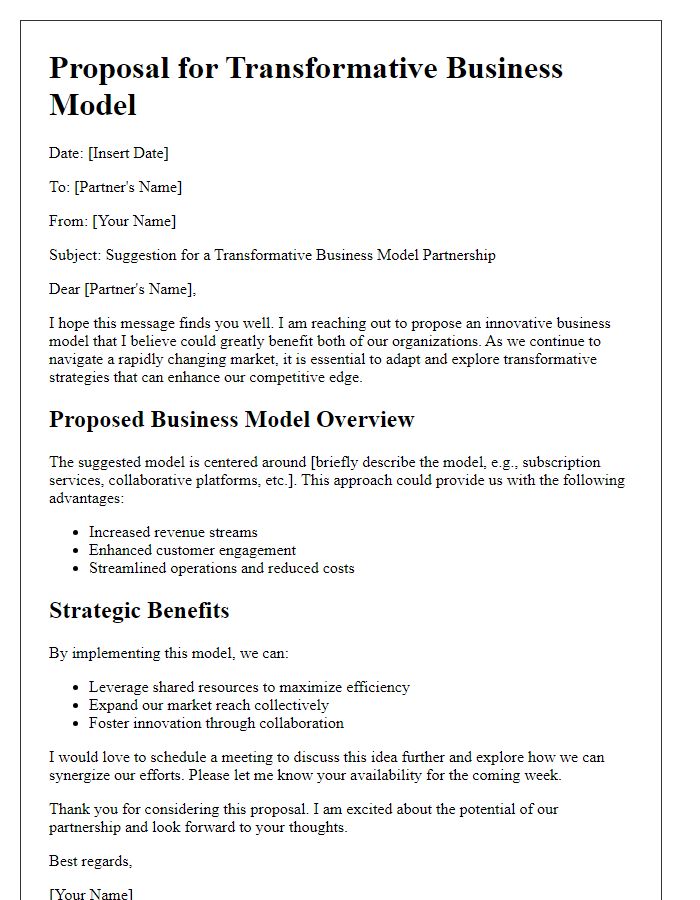

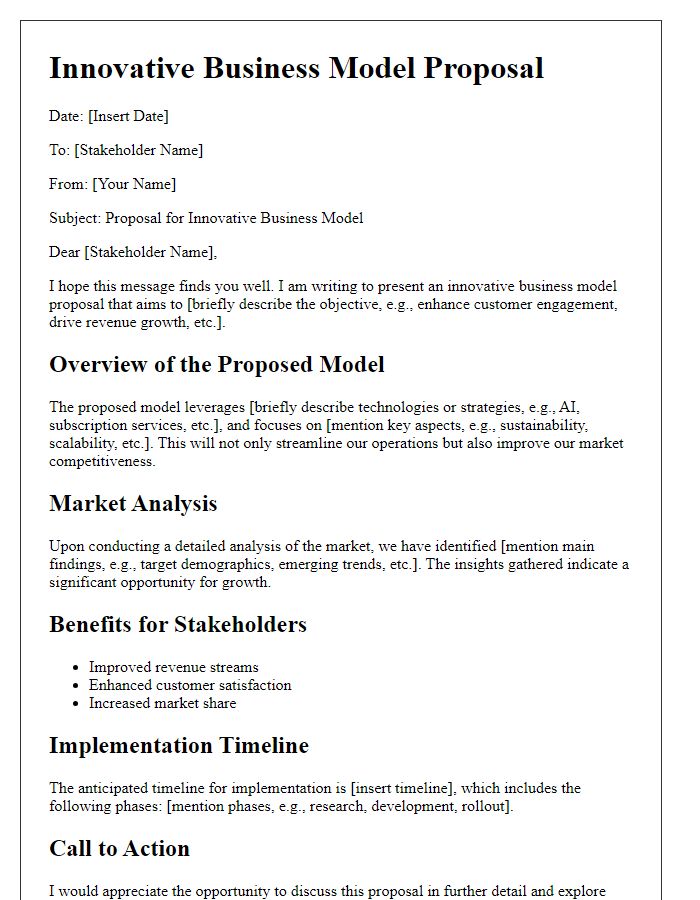
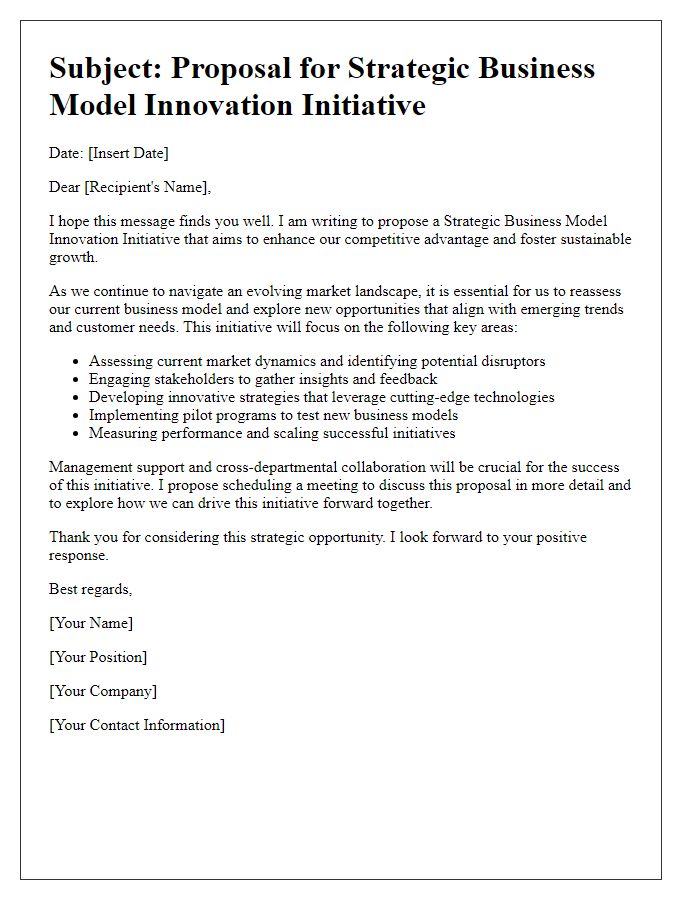
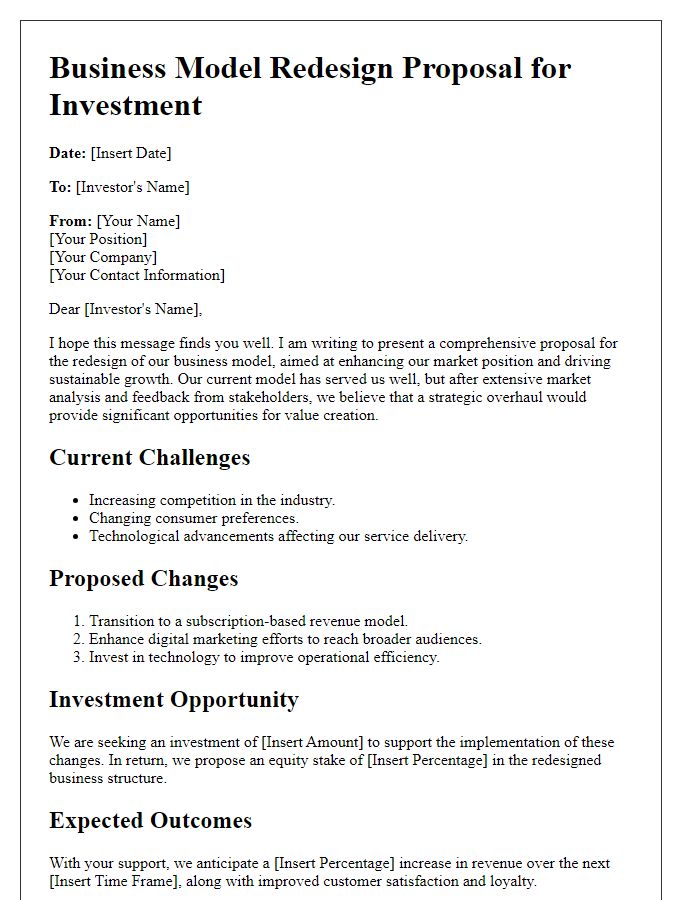
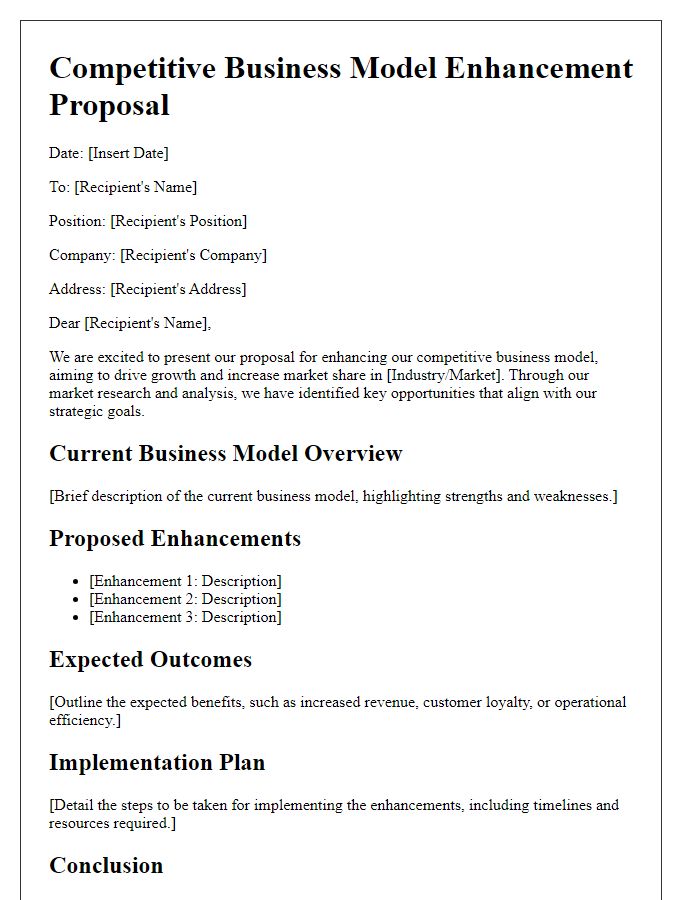
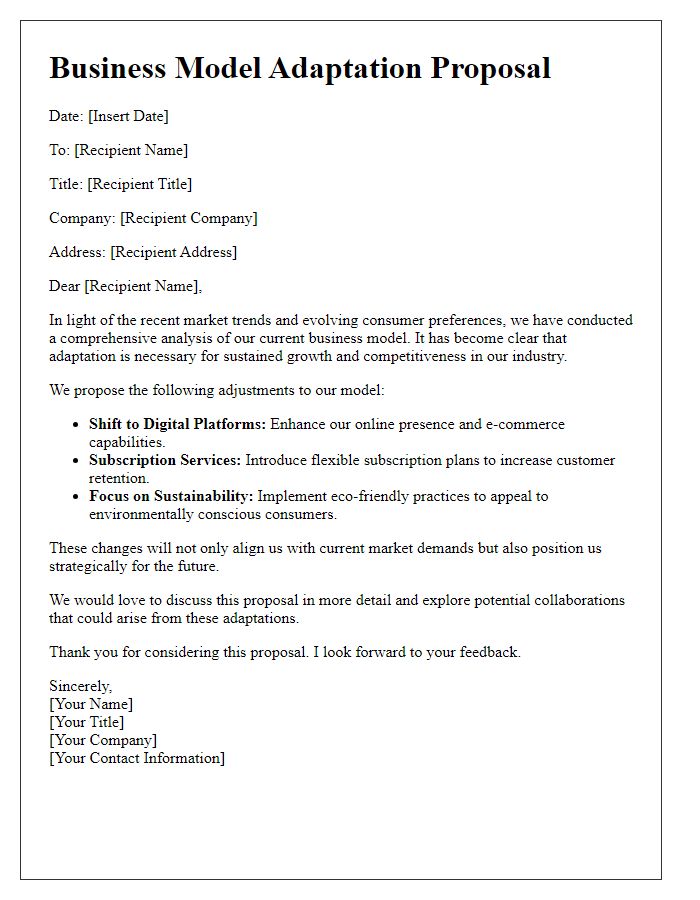
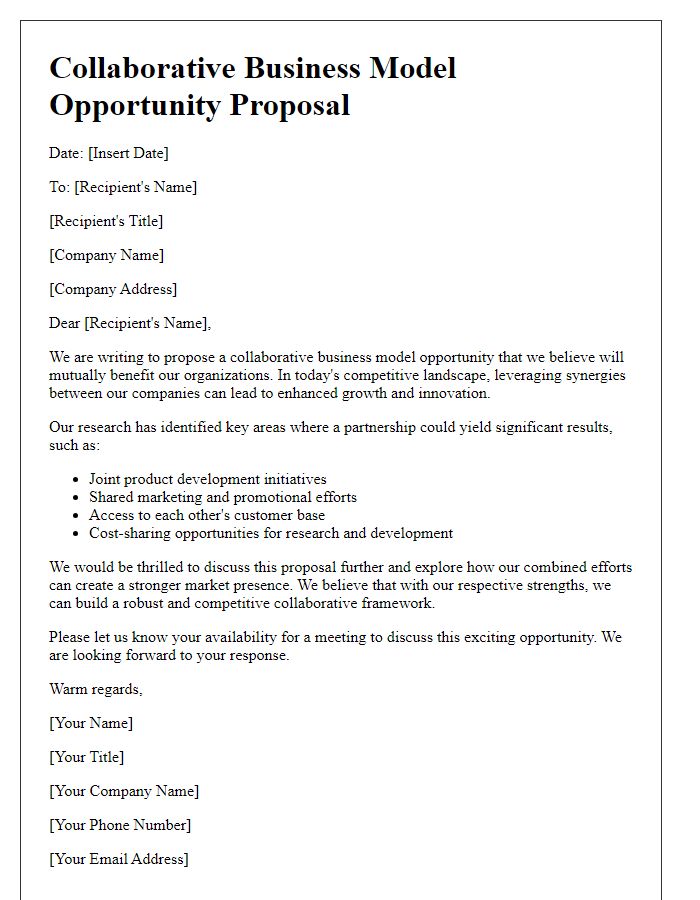
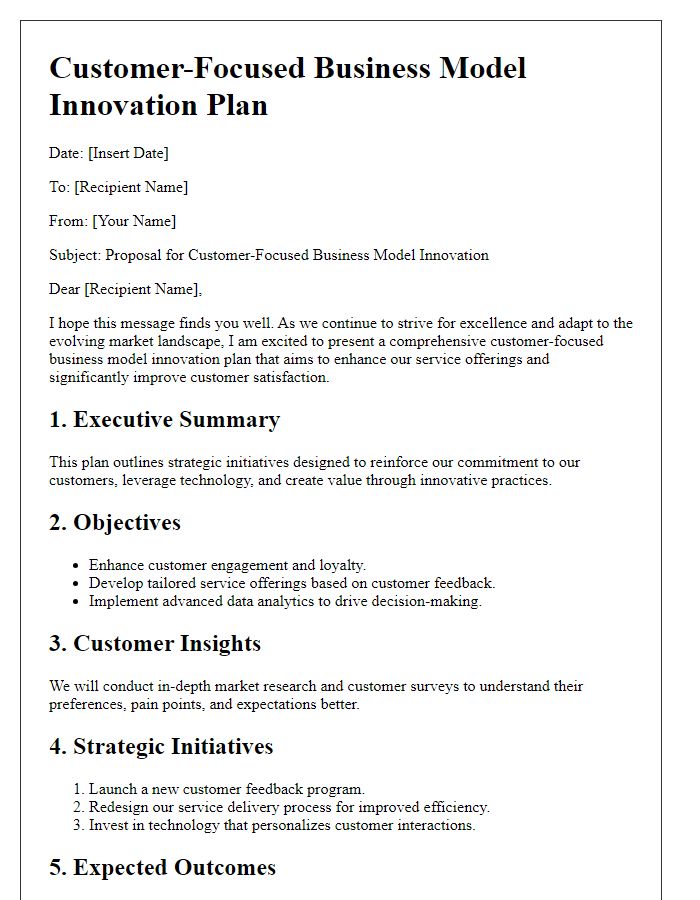
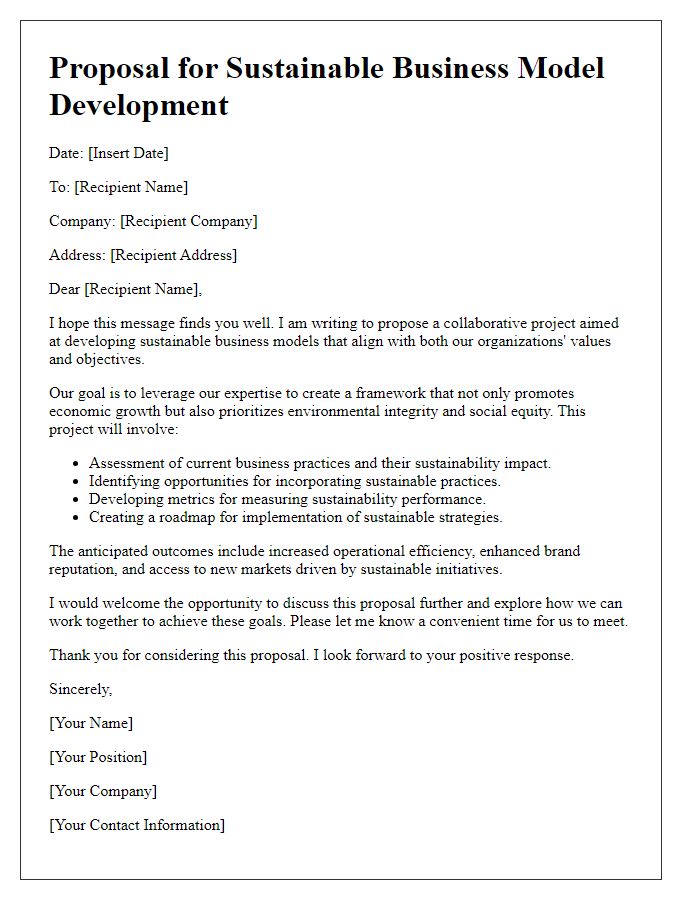
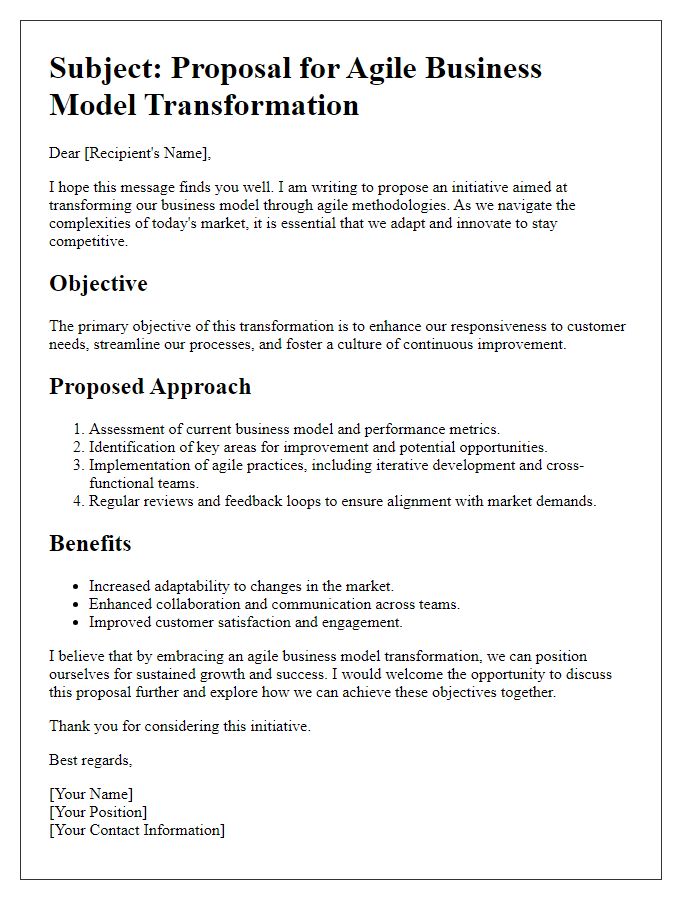


Comments